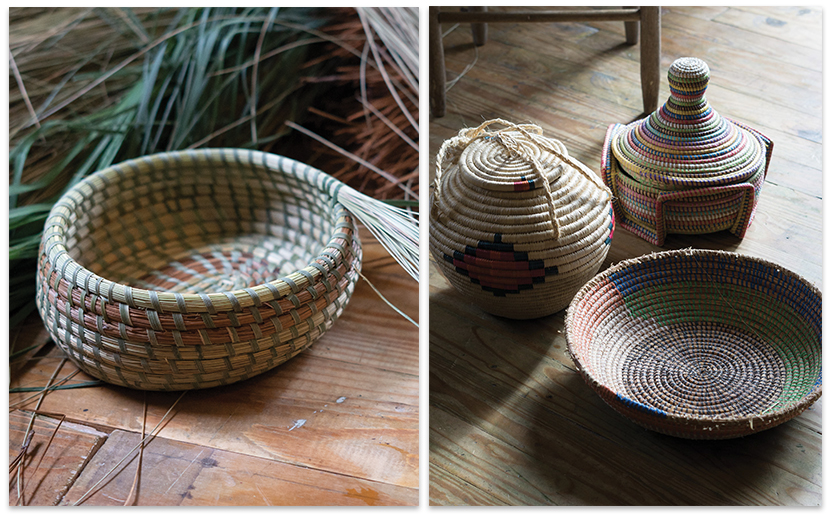Wigfall connects Gullah craft to West African artisans

Nakia Wigfall has been sewing sweetgrass baskets since she was four years old.
Nakia Wigfall comes from a long line of sweetgrass basketmakers that traces back seven generations. She and her siblings grew up in the Six Mile community in north Mount Pleasant, where they were taught the exacting craft by their mother, who was taught by her mother. But Wigfall, 60, had long sensed that this connection went back further—and farther—than that. “I have always felt there was a part of me missing,” she explains. “I learned a little bit about slavery in school, but not the full story. Then one day, it hit home for me—those people are my people.”
In 2016, Wigfall took her first trip to Senegal to explore her ancestral roots and noticed how similar the Senegalese basketmakers’ sewing style was to her own. This December, she returns to West Africa with a mission: to create a direct and tangible connection with Sierra Leone artists by collaborating on an international basket-sewing project.

(Left) Global Influence - When Nakia Wigfall travels to Sierra Leone this month, she’ll take a starter sweetgrass basket for West African artisans to complete—sewing together cultures to illustrate how the Gullah sweetgrass tradition developed; (Right) Wigfall has collected baskets made by Senegalese and Ugandan artisans.
Bright Idea: I began to envision this project on my first trip to Senegal. I’ve been dreaming about creating what I’m calling the “International Sweetgrass-style Connection Basket” ever since. This time, I’m bringing some starter baskets with me, and I’m going to Sierra Leone, where their sewing looks different from ours; there’s less space between the grass and the binding material. I hope I’ll get to spend a few days in the village with the basketmakers. We’ll be working hard.
Design Direction: My plan is to make a rice fanner basket, because that’s an actual connection between our cultures. They still harvest and winnow rice and still use winnowing baskets. I also want to make a breadbasket, which is one of our traditional styles. I’m bringing the starters, but they’ll be adding their own materials.
On Display: I’ve had some conversations with people at the International African American Museum, and they’ve shown some interest. My hope is that the baskets will be displayed there.
Sharing the Story: I’ve just finished a children’s book about my experiences growing up Gullah and making baskets, so I’m excited to show the children in the villages what I do and how we make our baskets in the Lowcountry. Some 20 of us are going, and ETV will be documenting the trip.